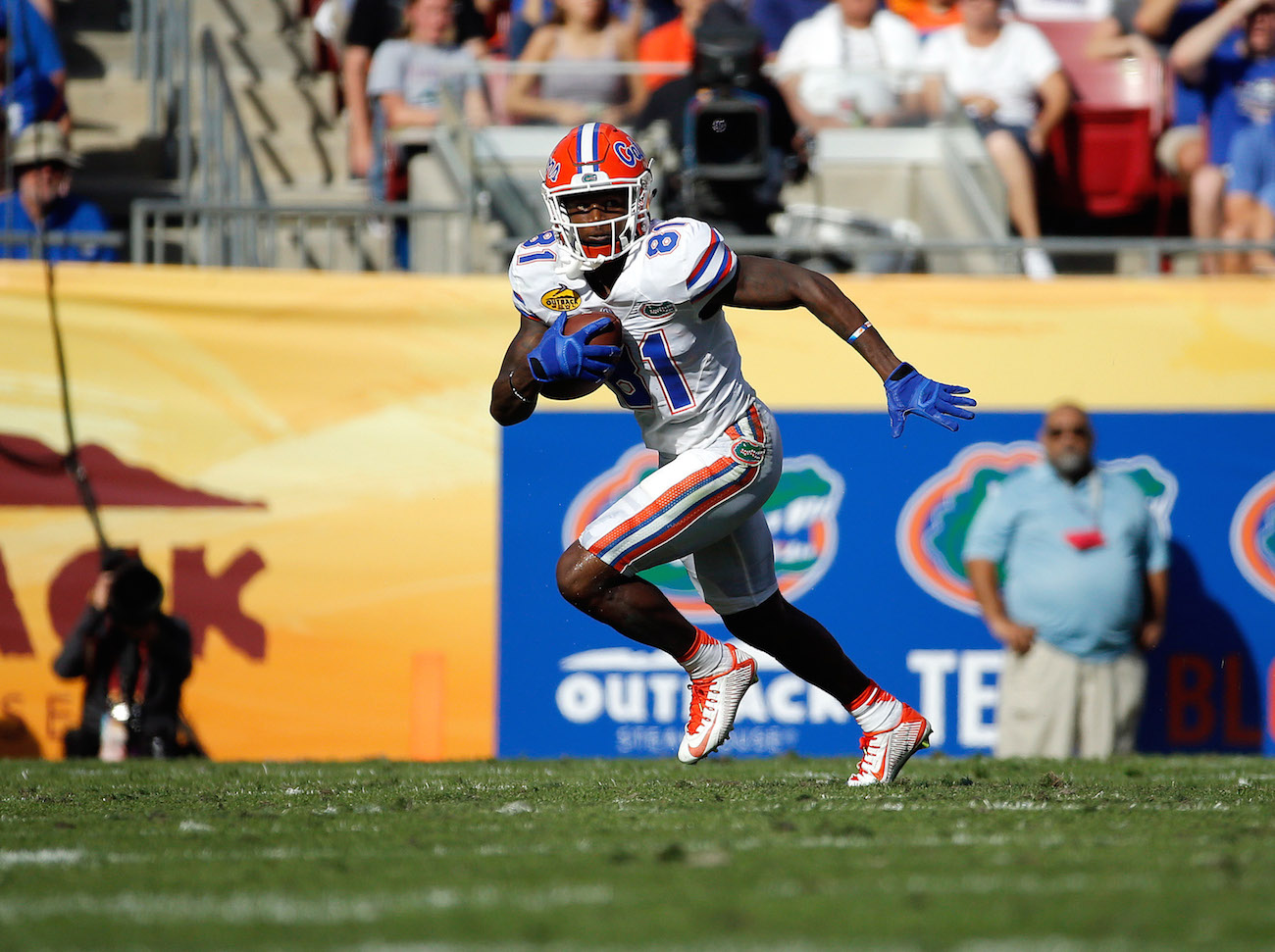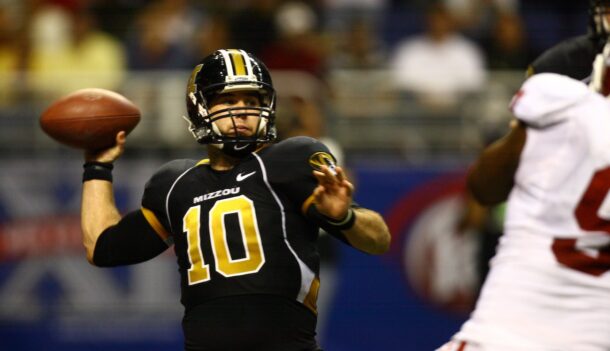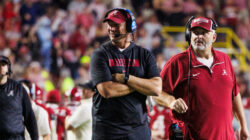
GAINESVILLE, Fla. – After two seasons of getting to Atlanta but coming up short, Florida coach Jim McElwain has said the Gators are ready to kick the door down. Winning another SEC championship would constitute a dream season for many in Gator Nation.
As has become the norm in the post-Tim Tebow era, there’s uncertainty at the quarterback position. Notre Dame transfer Malik Zaire and redshirt freshman Feleipe Franks are presumed to be the top two signal-callers battling for the starting job. Once again, the quarterback could decide whether 2017 is a dream season or ends in disaster.
The keys to a dream season
1. Callaway and QB1 lead a productive passing attack
The pieces are in place for Florida to have a productive passing game. McElwain recently called the offensive line the team’s top position group, which bodes well for pass protection. Junior WR Antonio Callaway has the speed, reliable hands and excellent route-running you look for in a go-to wideout. And if defenses focus too much on covering Callaway, one of Florida’s other wide receivers such as Tyrie Cleveland, Brandon Powell, Dre Massey or Josh Hammond is capable of making them pay.
The Gators have lacked consistency in the passing game ever since Tebow graduated, but this is arguably the most well-rounded supporting cast of the post-Tebow era. If Zaire or Franks knows where to go with the ball, the protection should be there and so should the playmakers.
2. A running quarterback proves to be the offense’s secret weapon
Florida’s offense hasn’t featured a Wildcat quarterback in two seasons under McElwain. That appears likely to change.
We never got to see it, but McElwain hinted last season that there was a package of plays that had Massey taking direct snaps. Massey got injured in Week 1 and was lost for the season, scrapping what McElwain says was going to be a big part of the offense.
This spring, true freshman Kadarius Toney, a 3-star athlete as a recruit, worked at the quarterback position. Coaches raved about what he brought to the team as a runner. Toney was responsible for two of the most notable highlights of the spring game, a touchdown pass he threw while scrambling and a 34-yard run to end the game, the longest rushing play of the night.
Toney looked like he had found his niche in the offense, and then Zaire showed up. The graduate transfer from Notre Dame is a dual-threat quarterback who has his share of highlights making plays with his legs.
Whether it’s Toney or Zaire, the Gators could really use a boost in the running game from the quarterback spot. Florida has been near the bottom of the SEC in long runs the past two seasons and has also struggled mightily in the red zone. Designed quarterback runs could be the solution to both of those problems.
3. The defense reloads instead of rebuilds
Florida’s defense lost eight of its starters to graduation and the NFL Draft. Since the defense carried the team the last two seasons, many see that as a sign of a drop-off.
It would be a dream come true to be near the top of the SEC in total defense and scoring defense again in 2017. It would likely take all 11 starters playing up to their potential to replace so much NFL talent, but the starting lineup will have a returning starter or experienced backup lining up at almost every position. Due to injuries a season ago, it was actually relatively rare that the Gators had all seven defensive draftees on the field at the same time. Returning linebackers David Reese and Vosean Joseph, for instance, were key in UF’s win over LSU with starters Jarrad Davis and Alex Anzalone both sidelined.
There’s enough experience in all three defensive units that the Gators won’t be totally lost. If the defense plays above expectations, the Gators could be looking at a third consecutive trip to the SEC Championship Game.
4. DeAndre Goolsby has a breakout season
Every few seasons, the Gators seem to feature a dynamic tight end in the passing game. In recent years, we’ve seen Trey Burton, Jordan Reed and Jake McGee all give Florida a dynamic pass-catching weapon at the position. Goolsby has the height, speed and athleticism to be a big-time tight end in the Gators’ offense.
Last season, Goolsby had 38 receptions for 342 yards and three touchdowns. In seven games, however, he had three catches or less. If the Gators make better use the 6-foot-4, 244-pound Goolsby, there are mismatches waiting to happen.
5. Jordan Scarlett runs for 1,000 yards
The Gators started the 2016 season with a committee approach at running back, but roughly halfway through the season Jordan Scarlett became the feature back (179 carries, 889 yards, 6 TDs). Scarlett’s average of 4.97 yards per carry is middle of the pack among SEC rushers, but the Gators were 3-0 when Scarlett carried the ball 20 times or more (Georgia, LSU, South Carolina).
If Florida gets Scarlett his carries, the third-year back should be on his way to a 1,000-yard season, which has only happened twice in the last decade (Mike Gillislee, 2012; Kelvin Taylor, 2015).
Recipe for disaster
1. Zaire vs. Franks divides the team
Any time there’s a quarterback competition, there’s a chance that the team becomes split on which signal-caller should take the starting job. On offense, it’s an especially young team without a clear veteran leader. Problems off the field can lead to poor performances on the field if players start to mentally check out.
The good news is that McElwain and his staff have handled quarterback competitions the previous two seasons. With Will Grier and Treon Harris, it was quite obvious that Grier had pulled ahead, and the comeback win over Tennessee sealed his status as the starter – until the suspension. In the case of Luke Del Rio and Austin Appleby, both were model teammates in setting an example for Franks and Kyle Trask on how to handle competing for the starting job.
2. A young secondary gets exposed
Marcell Harris being out for the season due to a torn Achilles tendon is a huge blow to the Gators’ secondary. After two early entries into the NFL Draft (Teez Tabor, Quincy Wilson), only four returning defensive backs had played significant snaps, and Harris was one of them.
Sophomore Chauncey Gardner Jr. played cornerback this spring, but with a starting safety spot open, he’ll likely move over. If that happens, prepare to see a freshman cornerback start opposite of preseason All-SEC CB Duke Dawson. It’s not ideal, but the Florida secondary should still be able to function asking one of its 4-star freshmen (CB CJ Henderson, CB Marco Wilson, DB Brad Stewart) or inexperienced reserves (CB C.J. McWilliams, S Jeawon Taylor, CB Joseph Putu) to step up. Losing one or more of Dawson, Gardner or S Nick Washington, however, would be devastating.
3. New QB, same woes
In the eyes of many, quarterback play has been the Gators’ biggest problem the last two seasons. After Will Grier was suspended mid-season in 2015 – when the Gators were 6-0 – the team limped along to a 4-4 finish under Treon Harris, barely defeating the likes of under-.500 squads Vanderbilt, South Carolina and FAU and getting blown out by Florida State and Michigan.
Last season, the offense flashed occasionally under both Del Rio and Appleby, but more people remember the subpar performances against Missouri, Georgia, Arkansas, FSU and Alabama. After returning from an early-season leg injury, Del Rio was a turnover machine with under-thrown passes becoming easy interceptions for SEC defenses. While Appleby had impressive arm strength and mobility, his decision-making lacked.
Watching Florida football over the years, there’s a tendency to think “it can’t get any worse” when it comes to the quarterback position. If the offense has the same old problems under a new quarterback, the biggest issue might be the coaching.
Andrew writes about sports to fund his love of live music and collection of concert posters. He strongly endorses the Hall of Fame campaigns of Fred Taylor and Andruw Jones.







